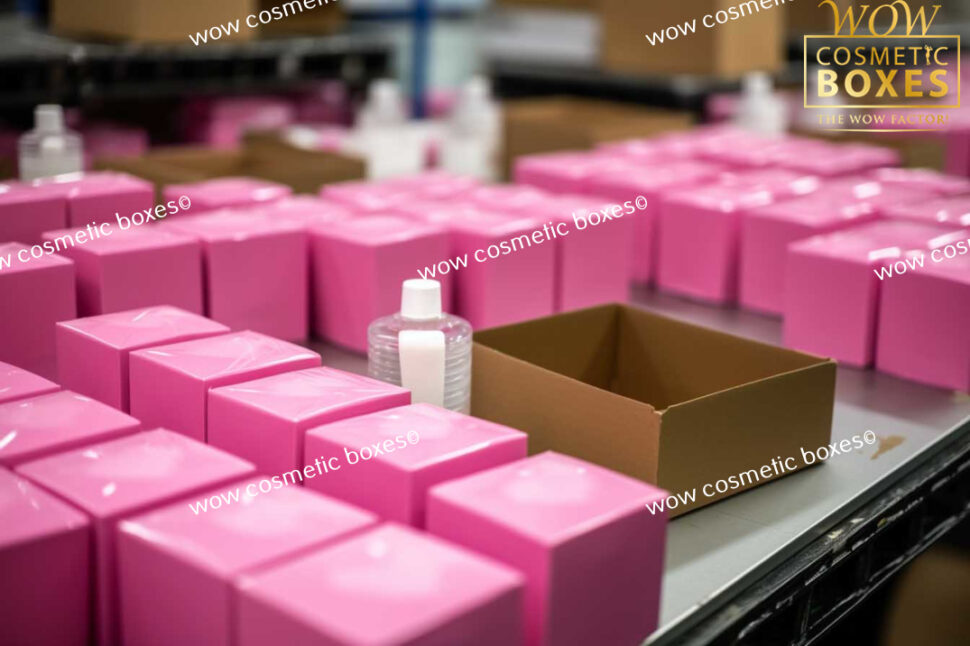
In the ever-evolving world of cosmetics, packaging plays a vital role in capturing consumers’ attention and fostering brand loyalty. Custom cosmetic packaging entices and engages potential buyers as a carefully wrapped gift mesmerizes the recipient.
As we look ahead to 2023, this article delves into the top trends in cosmetic packaging. By exploring sustainable materials, innovative designs, personalized experiences, user-friendly functionality, and technology integration, we aim to equip businesses with insights to stay at the forefront of the industry.
Key Takeaways
- Sustainable packaging solutions are in high demand, focusing on eco-friendly materials such as plant-based plastics and compostable paper.
- Unique shapes and designs for product display are crucial for attracting consumers, with brands utilizing creative branding elements and attention-grabbing aesthetics.
- Personalized packaging is increasingly important for brand differentiation and emotional connection, with customized elements creating exclusivity and leaving a lasting impression on customers.
- Functional and user-friendly packaging is prioritized, with innovative dispensing mechanisms and ergonomic designs enhancing the user experience and preventing product wastage.
Sustainable Materials and Eco-Friendly Packaging Solutions
As the demand for sustainable and eco-friendly packaging solutions continues to rise, cosmetic brands need to explore using sustainable materials in their custom packaging designs. With consumers becoming increasingly conscious of the environmental impact of their purchasing choices, the beauty industry is under pressure to adopt greener practices. Biodegradable options and green packaging alternatives are emerging as the go-to solutions for cosmetic brands looking to meet this demand.
Biodegradable materials, such as plant-based plastics and compostable paper, offer a sustainable alternative to traditional packaging materials. These materials break down naturally over time, reducing their environmental impact. In addition to being biodegradable, many of these materials are also made from renewable resources, further enhancing their eco-friendly credentials.
Cosmetic brands can also opt for green packaging alternatives, such as recycled materials and reusable packaging. Using recycled materials, brands can reduce their reliance on virgin resources and contribute to the circular economy. Reusable packaging, such as refillable containers, reduces waste and offers a convenient and cost-effective solution for consumers.
Innovative Shapes and Designs for Enhanced Product Display
Using various innovative shapes and designs in custom cosmetic packaging can significantly enhance product display and captivate consumers’ attention. Creative branding and attention-grabbing aesthetics are key elements in achieving this goal.
Regarding custom cosmetic packaging, unique shapes can make a product stand out on the shelves and create a memorable experience for consumers. From geometric patterns to asymmetrical designs, brands are pushing the boundaries of traditional packaging to create visually striking displays.
Incorporating creative branding elements such as embossed logos or holographic finishes adds a touch of luxury and exclusivity to the packaging, further enticing consumers. In a competitive market, innovative shapes and designs are crucial in attracting attention and effectively conveying the brand’s message.
Personalized Packaging to Create a Unique and Memorable Brand Experience
Brands can leverage personalized packaging to create a unique and memorable brand experience for their customers. In today’s competitive market, personalized branding has become increasingly important for companies to differentiate themselves and connect emotionally with consumers. By incorporating customized elements in their packaging design, such as personalized messages, names, or images, brands can create a sense of exclusivity and make customers feel valued.
According to a study by Deloitte, 36% of consumers are more likely to purchase a product if it offers personalized packaging. This trend is further supported by e-commerce, where brands seek to recreate the in-store experience through personalized packaging. By tapping into the power of personalization, brands can leave a lasting impression and foster a stronger bond with their customers.
Functional and User-Friendly Packaging for Convenient Product Usage
Functional and user-friendly packaging ensures convenient product usage. In today’s fast-paced world, consumers are looking for packaging designs that catch their eye and make their lives easier. Brands are responding to this demand by creating user-centric packaging that focuses on convenience and ease of use. From innovative dispensing mechanisms to ergonomic designs, cosmetic packaging is redesigned to enhance the overall user experience.
Convenient designs are becoming a top priority for cosmetic brands as they strive to stand out. Packaging that is easy to open, close, and handle saves time and prevents product wastage. Consumers are more likely to repurchase products that offer a hassle-free experience. User-centric packaging goes beyond aesthetics and focuses on functionality, ensuring that consumers can easily access and use the product.
Technology Integration for Interactive and Engaging Packaging Solutions
With the increasing demand for innovative packaging solutions, cosmetic brands are integrating technology to create interactive and engaging packaging experiences. By leveraging augmented reality (AR) and virtual reality (VR) integration, brands can offer customers a unique and immersive way to interact with their products.
Here are two key ways in which technology is being integrated into cosmetic packaging:
- AR Integration:
Brands are using AR technology to allow customers to virtually try on makeup products, enabling them to see how different shades and styles would look on their face. AR packaging also provides interactive product information, such as ingredient details and usage instructions, enhancing the overall user experience.
- VR Integration:
Cosmetic brands are exploring VR technology to create virtual environments where customers can explore different beauty trends, receive tutorials, and attend virtual beauty events. VR packaging experiences offer a personalized and interactive way for customers to engage with the brand, fostering a deeper connection and increasing brand loyalty.

